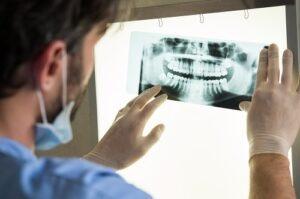 When you come to your appointments at J Street Dental Group, there’s a good chance we may recommend taking some x-rays of your mouth. And for good reason. Dental x-rays are critical in helping us detect a number of potential oral health problems early, often making treatment easier and more affordable. What our patients may not know is there are various types of dental x-rays that are appropriate to help diagnose different issues. In this blog, we cover some of the most common types of dental x-rays and why dentists use them.
When you come to your appointments at J Street Dental Group, there’s a good chance we may recommend taking some x-rays of your mouth. And for good reason. Dental x-rays are critical in helping us detect a number of potential oral health problems early, often making treatment easier and more affordable. What our patients may not know is there are various types of dental x-rays that are appropriate to help diagnose different issues. In this blog, we cover some of the most common types of dental x-rays and why dentists use them.
Table of Contents
Two Main Categories of X-Rays
When referring to dental x-rays, or radiographs, we are either referencing intraoral x-rays or extraoral x-rays. Extraoral x-rays take a view of the entire mouth structure, including the teeth, jaw, and skull while intraoral x-rays are more about the details of each tooth. Each category of x-ray is beneficial in its own way, depending on what your dentist in Sacramento is looking for.
Intraoral X-Rays
Since intraoral x-rays show such a detailed view of the teeth, they’re great at helping dentists identify specific problems that otherwise would be undetectable including:
- Cavities
- Gum Disease
- Deteriorating Bone
The most common type of x-rays taken at most dental offices fall into the intraoral category and are known as bitewing x-rays. Bitewings x-rays are used so frequently because they can successfully detect even the tiniest cavity that the naked eye wouldn’t be able to see. When caught early, cavities are much easier to treat.
Extraoral X-Rays
The images produced from extraoral x-rays often show the bigger picture and look at the entire anatomy of the mouth and skull. Extraoral x-rays can help examine:
- Tooth Growth & Development
- The Relationship Between the Teeth & Jaw
- Impacted Teeth
If you need an extraoral x-rays, you’ll most likely have a panoramic x-ray taken. The photos from a panoramic x-ray show the entire mouth and are helpful in diagnosing problems with your jaw joint (TMJ), developing wisdom teeth, or even a tumor.
Dental x-rays are incredibly safe as they emit a low amount of radiation. But that doesn’t mean you should go crazy and get as many as possible. How often you should get dental x-rays taken depends on your age and your oral health. If you’re at higher risk for decay, J Street Dental Group may recommend x-rays at each visit twice a year. If not, we may only suggest them once a year. Either way, having x-rays of your mouth completed will help keep your smile healthy.
